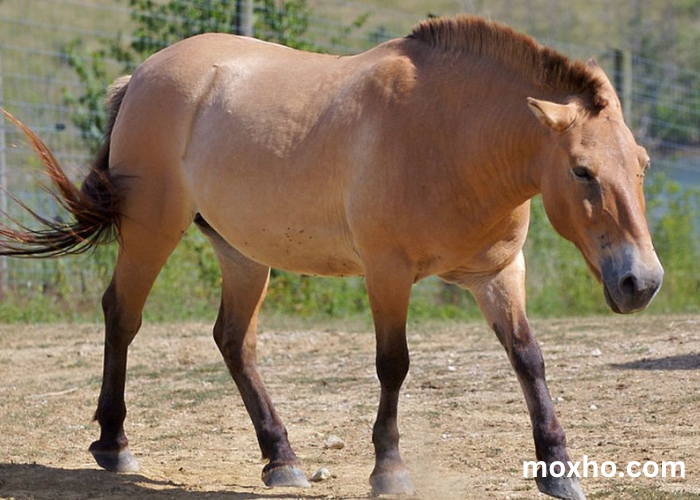The evolution of horses from wild creatures roaming the steppes to becoming integral companions in human society is a captivating tale of adaptation, survival, and mutual benefit. Horses have profoundly influenced human history, shaping transportation, warfare, agriculture, and culture. Understanding the journey of horses from their wild origins to domesticated partners offers insights into both their biology and the intertwined destinies of humans and animals. Explore a wide range of CasaCourses on our website, offering comprehensive learning materials and resources for your educational needs.
The Early Ancestors
The story of horses begins around 55 million years ago with a small, dog-sized creature known as Eohippus, or “dawn horse.” These early ancestors of modern horses had multiple toes and browsed on soft foliage in dense forests. Over millions of years, as the Earth’s climate and vegetation changed, so did these early horses. They evolved into larger, more specialized grazers, with longer legs and fewer toes, better suited for running across open plains.
One of the significant stages in horse evolution was the emergence of the genus Equus around 4 to 4.5 million years ago. These early Equus species were more similar to modern horses, with a single toe (hoof) on each foot and teeth adapted for grazing on grasses. They spread across multiple continents, including North America, where they eventually became extinct around 10,000 years ago, likely due to climate changes and human hunting.
Domestication and Early Human Interaction
The domestication of horses is believed to have occurred around 5,500 years ago on the steppes of modern-day Ukraine, southwest Russia, and west Kazakhstan. This process marked a significant turning point in human history. Initially, horses were likely domesticated for their meat and milk. Over time, their utility as draft animals and riding mounts became apparent, transforming human mobility and society.
The Botai culture, which flourished around 3500-3000 BCE in Kazakhstan, provides some of the earliest evidence of horse domestication. Archaeological findings, including bit wear on horse teeth and horse milk residues in pottery, suggest that the Botai people not only rode horses but also used them for their milk.
The Spread of Domesticated Horses
As domesticated horses spread across Eurasia, they became integral to various cultures and civilizations. The chariot, developed around 2000 BCE, revolutionized transportation and warfare. The Hittites, Egyptians, and later the Greeks and Romans, all utilized horse-drawn chariots, which became symbols of power and prestige.
By the first millennium BCE, horseback riding had become widespread. The Scythians, nomadic warriors from the Eurasian steppes, were among the earliest known people to ride horses extensively. Their mastery of horseback riding and archery gave them a significant military advantage and influenced other cultures to adopt similar practices.
Horses in the Ancient World
Horses continued to play a vital role in various ancient civilizations. In Persia, the Achaemenid Empire established an extensive network of roads and relay stations, with horses facilitating rapid communication across vast distances. The Greeks and Romans developed sophisticated cavalry units, which became crucial in their military campaigns.
In China, horses were essential for both agriculture and warfare. The Han Dynasty (206 BCE – 220 CE) invested heavily in breeding and improving horse stock to enhance their military capabilities, leading to the development of the Silk Road, which facilitated trade and cultural exchange between the East and West.
The Medieval Period and Beyond
During the medieval period, horses remained central to warfare, agriculture, and transportation. The introduction of the stirrup in Europe around the 8th century CE enhanced the effectiveness of cavalry, leading to the rise of heavily armored knights. Horses were also crucial for plowing fields, carrying goods, and serving as mounts for messengers and traders.
The Age of Exploration saw horses being transported across the globe. Spanish conquistadors brought horses to the Americas in the 16th century, reintroducing them to a continent where they had been extinct for millennia. Indigenous peoples of the Americas quickly adopted horses, transforming their cultures and lifestyles, particularly in the Great Plains where tribes like the Comanche became skilled horse riders and buffalo hunters.
Modern Times
Today, horses are no longer essential for transportation or agriculture due to technological advancements. However, they continue to hold significant roles in sports, recreation, therapy, and as cultural symbols. Horse racing, show jumping, dressage, and rodeo are popular equestrian sports worldwide. Equine-assisted therapy has proven beneficial for individuals with physical, emotional, and developmental challenges.
The bond between humans and horses remains strong, built on thousands of years of shared history. From wild herds galloping across ancient steppes to thoroughbreds thundering down racetracks, the evolution and domestication of horses highlight their enduring impact on human civilization. Their journey from wild to domesticated is a testament to the remarkable adaptability and resilience of these majestic animals.
